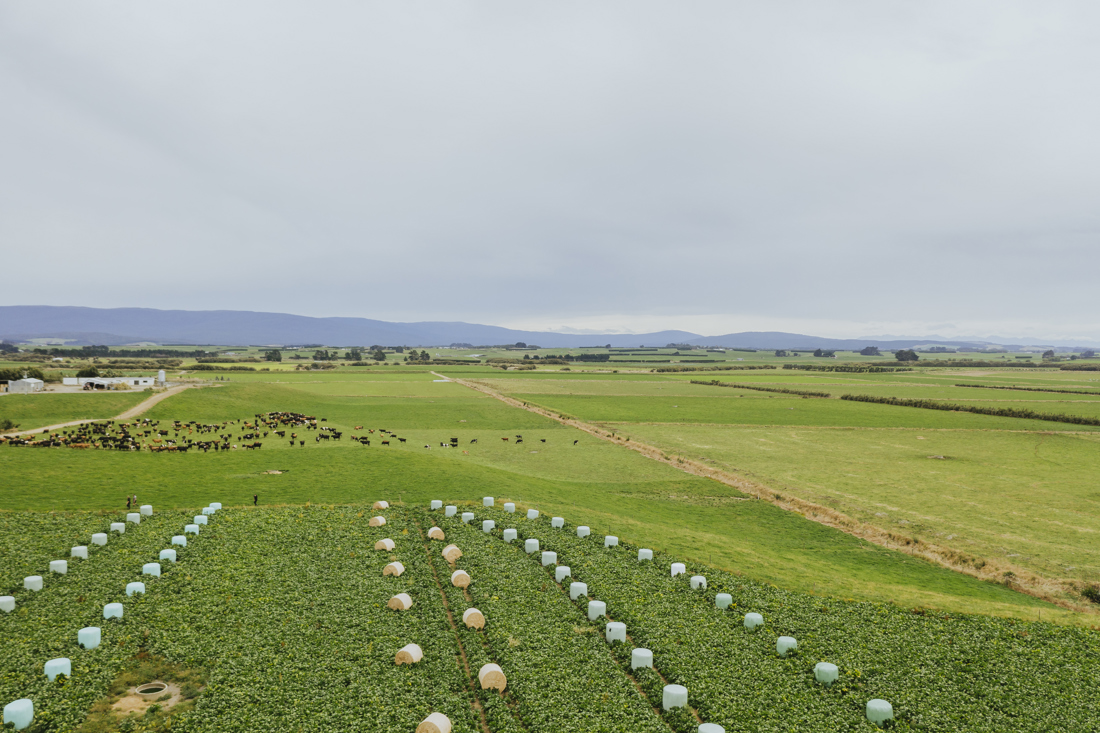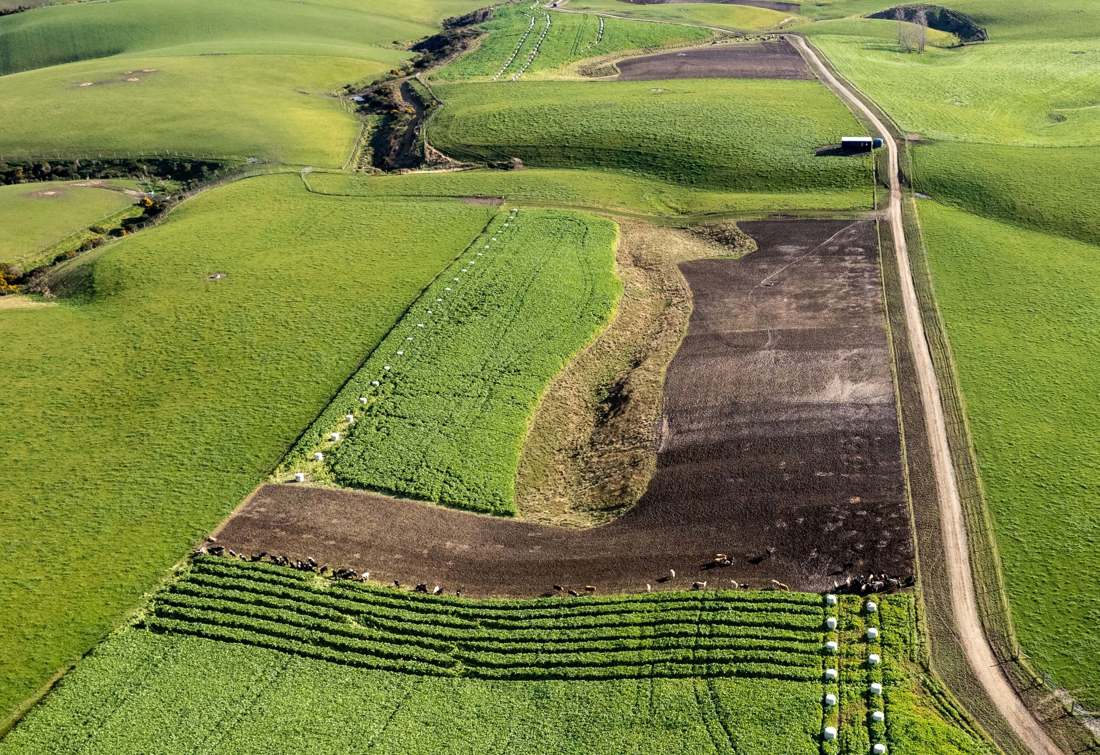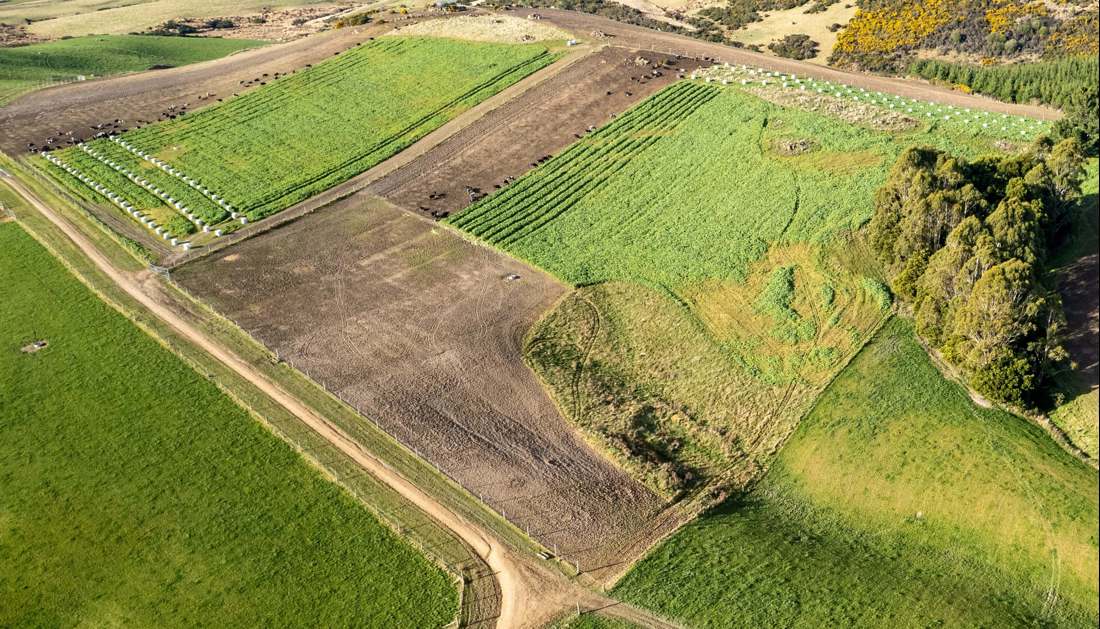Critical source areas
5 min read
Critical source areas, such as swales and gullies, can transport large amounts of soil, phosphorus, and E. coli to waterways. Recognising critical source areas and managing them with buffer zones can help minimise these losses. Leaving grass buffers slows water flow, allowing it to soak into the soil rather than run off. You might need larger buffers if your paddock has certain conditions like steep slope, heavy rainfall, or high stock density. Always check with your regional council for any regulations and create your winter grazing plan accordingly.
A critical source area can transport large amounts of soil, phosphorus and E. coli to waterways. The area accumulates run-off from adjacent land delivers, through overland flow and seepage (liquid slowly leaking through small holes). When wet, the area of land acts as a conduit for any rainfall runoff and causes the movement of soil and nutrients which may then flow to streams, rivers, lakes, wetlands or drains.
Critical source areas can include:
When it comes to winter grazing, the critical source area of most concern is the area of land usually defined as swales and gullies or depression. A swale is a shallow channel with gently sloping sides, a low-lying part of a paddock that can be moist or marshy. Whereas a gully is a small but deep trench, typically on a hillside. A gully can be a sign of serious erosion of soil by running water.
A critical source area can be identified by looking for low-lying areas in the paddock. They are often most easily identified after heavy rainfall and you can see where rainfall has pooled or run-off.

Use the winter grazing plan to help identify and plan around critical source areas.
Please check in with national regulations and regional rules regarding critical source areas and winter grazing.
Identifying swales, gullies and waterways in the paddock, and then managing them using buffer zones, can significantly reduce losses to surface and groundwater. This is especially important during winter grazing.
Swales and gullies left uncultivated will slow down water movement, allowing it time to soak into the soil rather than running off. The land will maintain topsoil and reduce the loss of nutrients and sediments from land entering waterways.
Preventing stock from entering swales, gullies or waterways can improve animal health by reducing the risk of mastitis and hoof problems.
My farm is relatively flat. Each winter, after some heavy rain, I look at the paddocks I am hoping to crop next year. I mark out the critical source areas then with fence standards because sometimes they are harder to see in spring.
Farmer tip
A buffer zone is a grass strip in and around critical source areas and next to waterways. This buffer reduces contaminant loss by maintaining soil structure, allowing runoff to infiltrate the soil. This means that in heavy rain events when soils are saturated, the rainfall runoff will not run over bare ground collecting soil.
The national wintering rules require a minimum of a 5m buffer around waterways, wetlands or drains (regardless of whether there is any water in it at the time). Buffers around critical source areas, in this case swales, gullies and waterways, need to maintain vegetation cover until after 30 September.
Please check with your regional council to determine if a wider buffer may be required under local rules.
The faster the water is flowing into a buffer zone (ie. the greater the slope of the paddock), the wider the buffer zone will need to be to provide time for effective filtering and infiltration. In situations where a buffer is filtering a large amount of runoff, or the runoff is fast flowing, a larger buffer is required.
This includes situations where the crop paddock has a:
Place bales away from waterways and critical source areas. Cows will spend a lot of time around the bale which will result in greater soil damage in these areas.
When constructing new tile drains, direct them into areas where runoff can be filtered, such as wetlands or grass buffers, before entering waterways.
There are a number of strategies available when cultivating land to help reduce nutrients and sediment loss via critical source areas, including swales, gullies and around waterways.
When cultivating the land, the buffer should ideally be left uncultivated to operate effectively. This includes creating an uncultivated buffer at the bottom of the slope which will help to reduce the risk of sediment from winter crops entering the waterway.




Map out the parts of the paddock you don't want sprayed. You can use Trac Map (best option). The next best option is to stake out exclusion areas with standards. Contractors will only cultivate land that has been sprayed.
Where safe, cultivate across slopes rather than up and down. Cultivating up and down can speed up the overland flow of water during heavy rainfall events.
Keep in mind, wintering forage crops should only be planted on slopes that are 10° or less. If you wish to plant on slopes over 10° you will require a consent from your regional council or a Freshwater Farm Plan
Paddock selection for crop cultivation is a crucial element of successful wintering.
Now’s the perfect time to check in, plan, and set up for a strong season. We’ve pulled together smart tips and tools to help you stay ahead all winter long.
Whether you prefer to read, listen, or download handy guides, we’ve got you covered with trusted tools to support your journey every step of the way.
Put our proven strategies and seasonal tools to work. Boost production, support animal health and watch your profits hum.
Tools that are backed by science, shaped by farmers and made for this season.
That’s Summer Smarts.